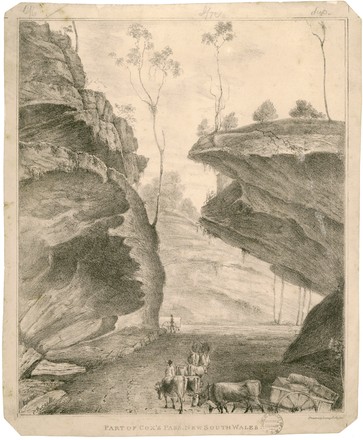
Part of Cox's Pass, New South Wales
after 1814
SV1B / Blu M / 21
Lithographic print
SV1B / Blu M / 21
Lithographic print
In 1814, just a year after the Blaxland, Wentworth and Lawson crossing, Governor Lachlan Macquarie commissioned the military officer and magistrate William Cox (1764-1837) to supervise the building of the first road across the Blue Mountains. Cox oversaw a team of 30 convicts, who took only six months to build 163 kilometres of road, which spanned from Emu Plains to the Macquarie River (near present day Bathurst.)
This lithograph was published in London in 1821, and depicts part of Cox’s road descending from Mount York to the Hartley Vale below. The artist, E. Purcell, based the scene on drawings originally done by John William Lewin. In 1815 the natural history artist travelled with Governor Macquarie on his inspection of Cox’s road and the western plains. Governor Macquarie was impressed with Cox’s work, and named this descent from Mount York, Cox’s Pass. Cox’s Pass is today a popular bushwalk.


 Back to list
Back to list